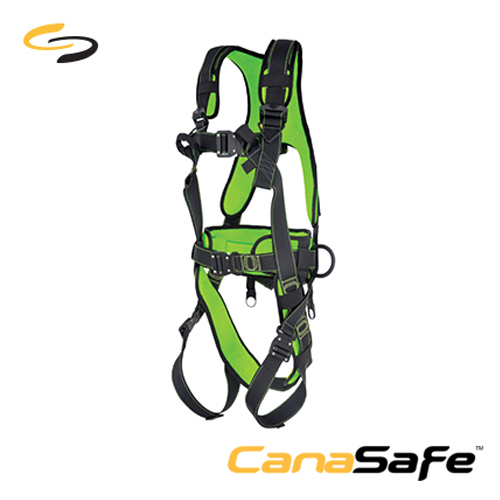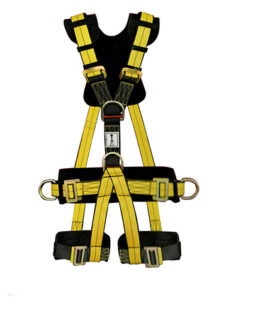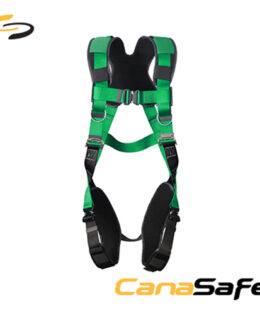desiHarness – Canasafe LaTCH PRO
- 2 Ideally positioned chest attachment textile loops
- A Dorsal attachment D-Ring for fall arrest
- 2 lateral D-Rings for work positioning
- Adjustable shoulder, thigh-straps and waist belt Shoulder straps have combination buckles and thigh straps and waist strap are provided with automatic buckles for easy adjustment
- Quick release buckles for hassle free on fitting
- Lanyard keepers on shoulder straps have been provided for easy placement of free lanyards
- Made in EU
- Standard: EN 361:2002
#50030 LaTCH PRO, Body harness
Manufactured by: CanaSafe
Harness – Canasafe LaTCH PRO – BUY ONLINE
A harness is a piece of equipment designed to secure a person to a fixed object, preventing a fall or mitigating the impact of a fall.
What is a Harness and what is its importance?
Harness is a crucial safety device used in various industries, including construction, manufacturing, and agriculture.
Importance of Harnesses
Fall Prevention: The primary purpose of a harness is to prevent falls from heights. By attaching the harness to a secure anchor point, it provides a safety line that can stop a person from falling.
Injury Mitigation: In the event of a fall, a harness can significantly reduce the risk of serious injuries. It distributes the force of the fall across the wearer’s body, preventing direct impact to the head, neck, and torso.
Work Positioning: Harnesses can also be used for work positioning, allowing workers to safely and efficiently perform tasks at heights. This can improve productivity and reduce the risk of accidents.
Compliance: Many industries have strict safety regulations that require the use of harnesses in certain situations. Compliance with these regulations is essential to ensure the safety of workers and prevent legal issues.
What are different Types of Harnesses?
Full-body harnesses: These harnesses provide the most comprehensive protection, covering the chest, back, thighs, and legs.
Chest harnesses: These harnesses designs are for specific tasks that require a secure connection to the chest.
Shoulder harnesses: Primary usage of these harnesses are work positioning and restraint.
Key Components of a Harness:
Straps: These straps designs are to distribute the force of a fall and secure the harness to the wearer’s body.
Buckles: Use of these buckles are to adjust the fit of the harness and connect it to the anchor point.
D-rings: These rings are attachment points for the lanyard or lifeline.
By understanding the importance of harnesses and using them correctly, individuals can significantly reduce the risk of falls and injuries in hazardous environments.





